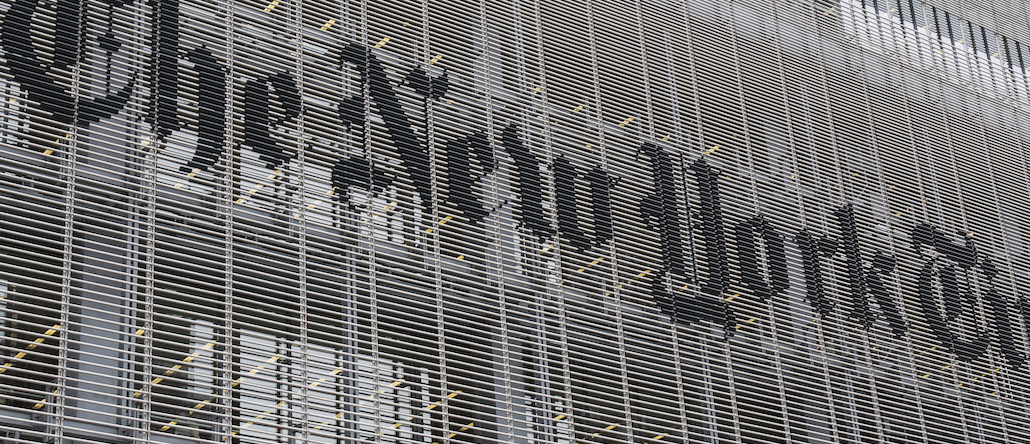Register by Jan 13 to save on passes and connect with marketers from Uber, Bose and more

For the second time this year, The New York Times is acquiring a marketing agency. This time, it’s buying Fake Love, an agency that specializes in live experiences, virtual and augmented reality.
The Times is trying to grow its revenue in part by offering more ad agency services, as it did by adding influencer marketing agency HelloSociety in March and now, Fake Love. Buying an existing agency was a faster way to build up those offerings than developing them from the ground up. The Times’ native ad unit, T Brand Studio, has worked with Fake Love before, so the publisher was already familiar with it. For one of the projects, the Times used Fake Love to create a VR video ad to promote the Weinstein Company movie “Carol: Dearest…”
“We’re really interested in playing a bigger role in the marketing services value chain — coming up with an idea, creating it, distributing the idea, measuring it,” said Sebastian Tomich, senior vp of advertising and innovation at the Times.
Financial terms of the deal, set to be announced today, were not disclosed. According to its LinkedIn profile, Fake Love has fewer than 50 employees.
Native advertising can be lucrative, but it’s hard to do well and with predictability, which has led publishers to look for other services to sell marketers. Tomich said Fake Love will help the Times meet new kinds of requests it’s fielding from advertisers itself rather than farming them out to external agencies.
“Thanks to Pokemon Go, I’m getting daily requests for [augmented reality],” he said. “I’m getting lot of requests for chatbots. And VR, the market is already hot. We’ve had a client once a week getting pretty serious about doing a project with us. We want to be able to bring that in house.”
Another part of the reason for buying an agency is so the Times can serve advertisers who are in the market for creative work but don’t necessarily want to buy media from the Times. That’s why, like HelloSociety, Brooklyn-based Fake Love will keep its own branding and maintain its operation separate from the rest of the Times.
“A big hurdle you have to overcome is, it takes a meeting or two to show we’re not pitching the New York Times audience, we’re pitching the creative,” Tomich said. “It’s really important that we have two different lines of business development so the lines remain distinct. If we’re affiliated with a publishing brand, you have to overcome that that we’re not there to pitch media.”
More in Media

Media Briefing: Here’s what media execs are prioritizing in 2026
Media executives enter 2026 weathered by disruption, but refocused on AI revenue, brand strength and video and creator opportunities.

Why publishers are building their own creator networks
Publishers are forming creator networks to regain control, combat traffic declines, and reach audiences shifting toward influencers.

The accidental guardian: How Cloudflare’s Matthew Prince became publishing’s unexpected defender
Cloudflare’s day job is fending off botnets and nation-state cyberattacks, not debating how Google and other AI firms crawl publisher sites.





